Ever since the Two Tunnels Greenway on the outskirts of Bath had opened I had wanted to take a walk along this path and its claim to fame is that it is presently the longest ex railway tunnel you can walk through at an impressive 1670 yards. The date is set in late 2015 to walk the route with my son and brother who have both been able to get leave but the only thing that will would stop us is the weather which as it turns out almost does on this twelve mile circular walk.
A watery sun of earlier is disappearing as we set off and this is being replaced by gloomy skies with a threat of rain. The weather forecast isn’t good either but at least it is fairly mild.
Parking on the southern side of Bath we immediately join the Two Tunnels Greenway which consists of a walkway along the former Somerset & Dorset Joint Railway which is shared with pedestrians and cyclists. Initially over the first part of the route it’s quite busy and it isn’t long before we reach the first tunnel. The Devonshire Tunnel is around 400 yards long and we are soon through it. Less people are around now as we walk along a well wooded section of track bed to the entrance to Combe Down Tunnel. This tunnel measuring 1670 yards has curves at each end and a long straight centre part so you lose daylight fairly soon. After a stopping for a couple of photographs we are soon enter the tunnel and the surface is good and it’s adequately lit. What is interesting is that through the middle part of the tunnel there are many points where music is broadcast from alcoves. Apparently this haunting cello type music was especially composed for the tunnel and makes a slightly eerie sound which echoes along the tunnel. Before it closed, the tunnel carried a single track railway along a moderate gradient with the highest point close to Bath end and was one of the longest tunnels built without any air shafts. This however had its drawbacks as Bath bound train drivers often were almost suffocated with smoke from the steam engines as they struggled up the gradient and on one occasion the driver and his mate became unconscious resulting in a fatal accident when the train ran away on its descent into Bath.
By the time we emerge from the tunnel it still hasn’t rained but it isn’t long before the rain begins to set in, and set in it does. Beneath the old railway viaduct at Tucking Mill we don waterproof gear before pressing on towards Monkton Combe. Tucking Mill is full of history and was once the site of a Fullers Earth mine. Furthermore it was the home of William Smith who was the ‘Father of English Geology’. In the steady rain we press onto Monkton Combe to take shelter in the church porch and to decide our next plan of action. There is the option of catching the bus back to Bath but instead we decide to continue on via the private Monkton Combe School. At any shelter I find, I stop and get out the map to memorise the next bit of the walk. We pass beneath the A36 before making around to the towpath of the former Somerset Coal Canal which on this occasion is almost drained out leaving many boats beached on its muddy bottom. The canal was built to take coal away from the North Somerset Coalfield.
At the historic Dundas Aqueduct, a grade one listed structure we pause briefly but the weather prevents us from taking a longer look. The aqueduct carries the Kennet & Avon Canal over the River Avon and the railway and was built between 1797 and 1801.
There is no need to look at the map for the next few miles as we are simply following the canal towpath. What we do need to find is a suitable dry spot to stop for lunch out of the rain. Heading north we overshot the Claverton Pumping Station and so back tracked in search of a place to stop. The Pumping Station which is a museum had been closed since 2013 for renovation and isn’t due to open until 2016 but a group of volunteers are working on site today and we enquire if it would be possible to take shelter to eat our sandwiches. As a result we are given a personal guided tour and offered the mess room with seats and a fire to warm ourselves and to eat our lunch in relative comfort in return for a donation. Deal done!
Slightly drier we set off again on this most miserable of November afternoons. It’s a two and half mile walk to Bathampton along a towpath filled with mostly shallow puddles to avoid. Well most of them are shallow. Nearing Bathampton the rain and wind does its worse as we are now directly heading into it and it isn’t long before we began to get quite wet. We hurriedly leave the canal towpath to seek shelter in the porch of the parish church at Bathampton. Meanwhile we occupy ourselves with a quiz of information on the notice boards in the church porch with me being quizmaster. My son and brother soon became experts on the knowledge of church fees for marriages and funerals.
It must have been the clearing up storm as when we emerge a quarter of an hour later there is blue sky showing and it isn’t long before there is fleeting glimpses of the sun. We continue onto Bath, now passing many narrow boats with permanent residents and later passing through Sydney Gardens. Here is located Cleveland House, a fine Georgian building which spans the canal at Bath number two tunnel and is one of the earliest surviving purpose built office buildings in the country. It was built for the owners of the Kennet and Avon Canal Company and my brother points out a hole in the tunnel ceiling beneath the office where a small bucket use to be lowered to collect fees from passing boatmen. We next continue down via the Bath Locks which lowers the canal to meet the River Avon. Bath Deep Lock is said to be one of the deepest canal locks in the country. After crossing some roads we walk briefly by the River Avon before making our way up on the A367 Wells Road then along other side roads back to the car by which time the threat of rain is returning.
You can find out more about the Two Tunnels Greenway by logging on to the following website where you can find a promotional video coving much of the route we took. www.twotunnels.org.uk
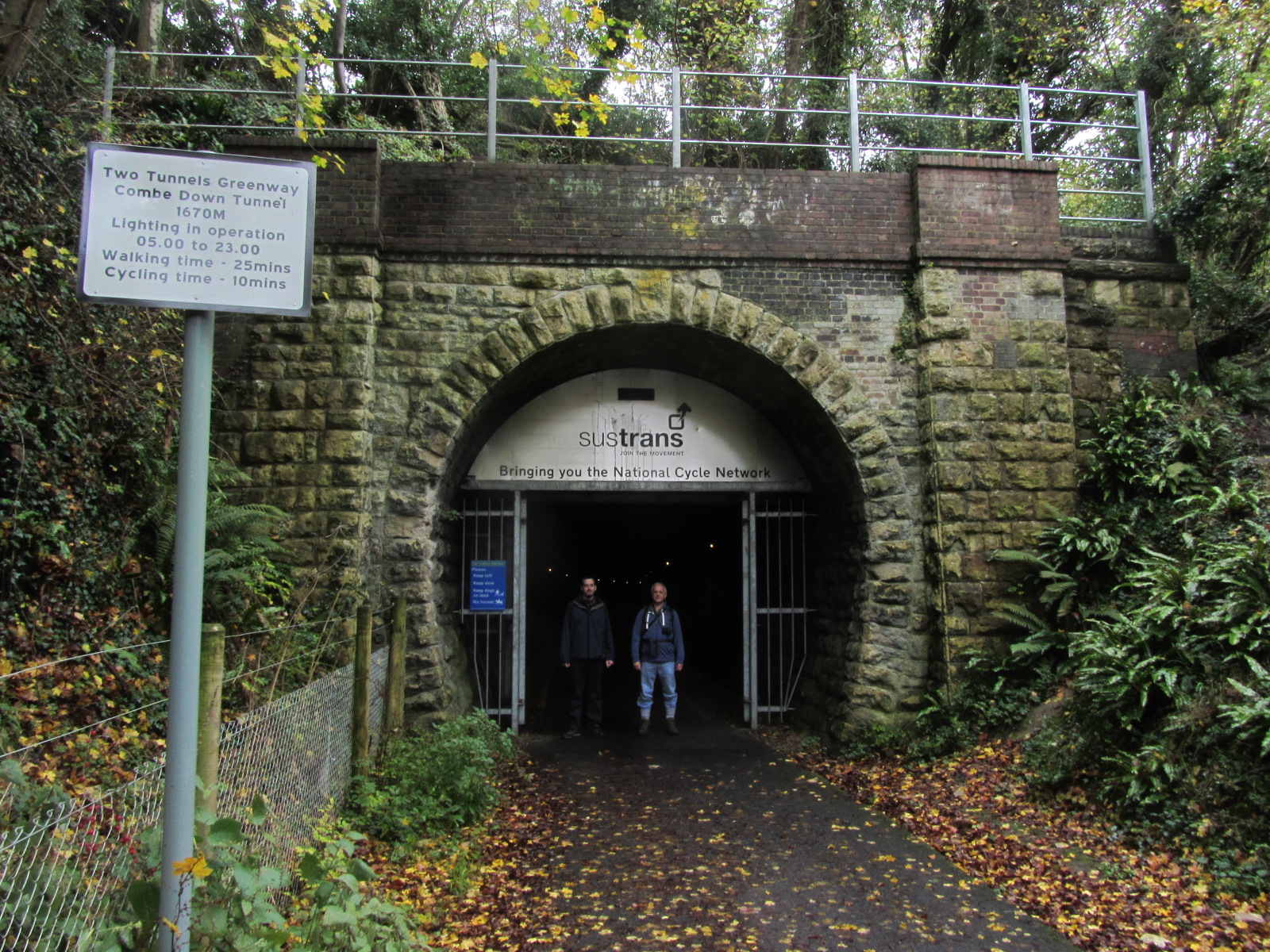 My son and brother standing ready to enter the Bath entrance to Combe Down Tunnel which at 1670 yards is the longest cycle/pedestrian railway tunnel you can currently walk through in the UK.
My son and brother standing ready to enter the Bath entrance to Combe Down Tunnel which at 1670 yards is the longest cycle/pedestrian railway tunnel you can currently walk through in the UK.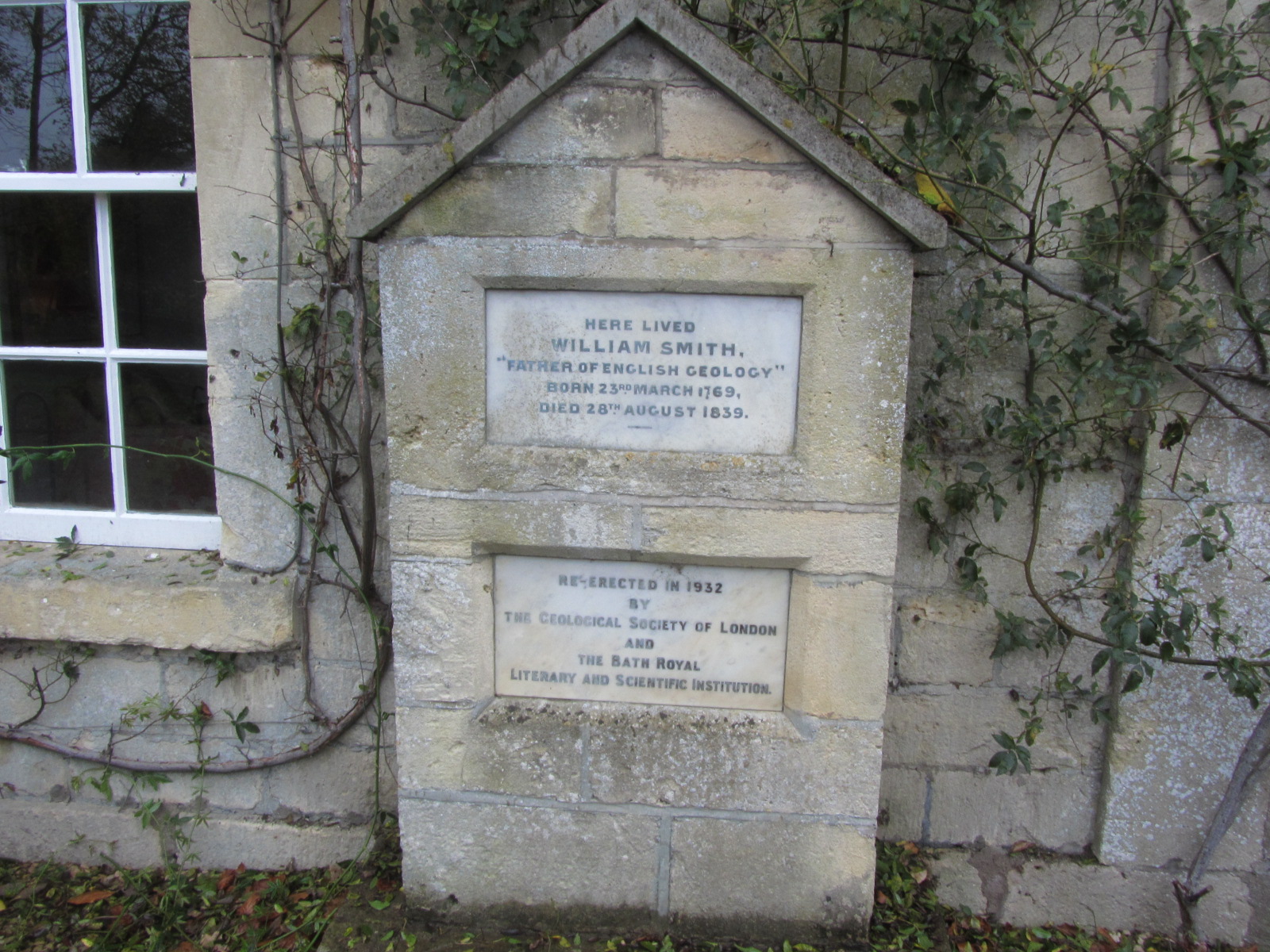 Plaque commemorating the home of William Smith, ‘Father of English Geology’.
Plaque commemorating the home of William Smith, ‘Father of English Geology’.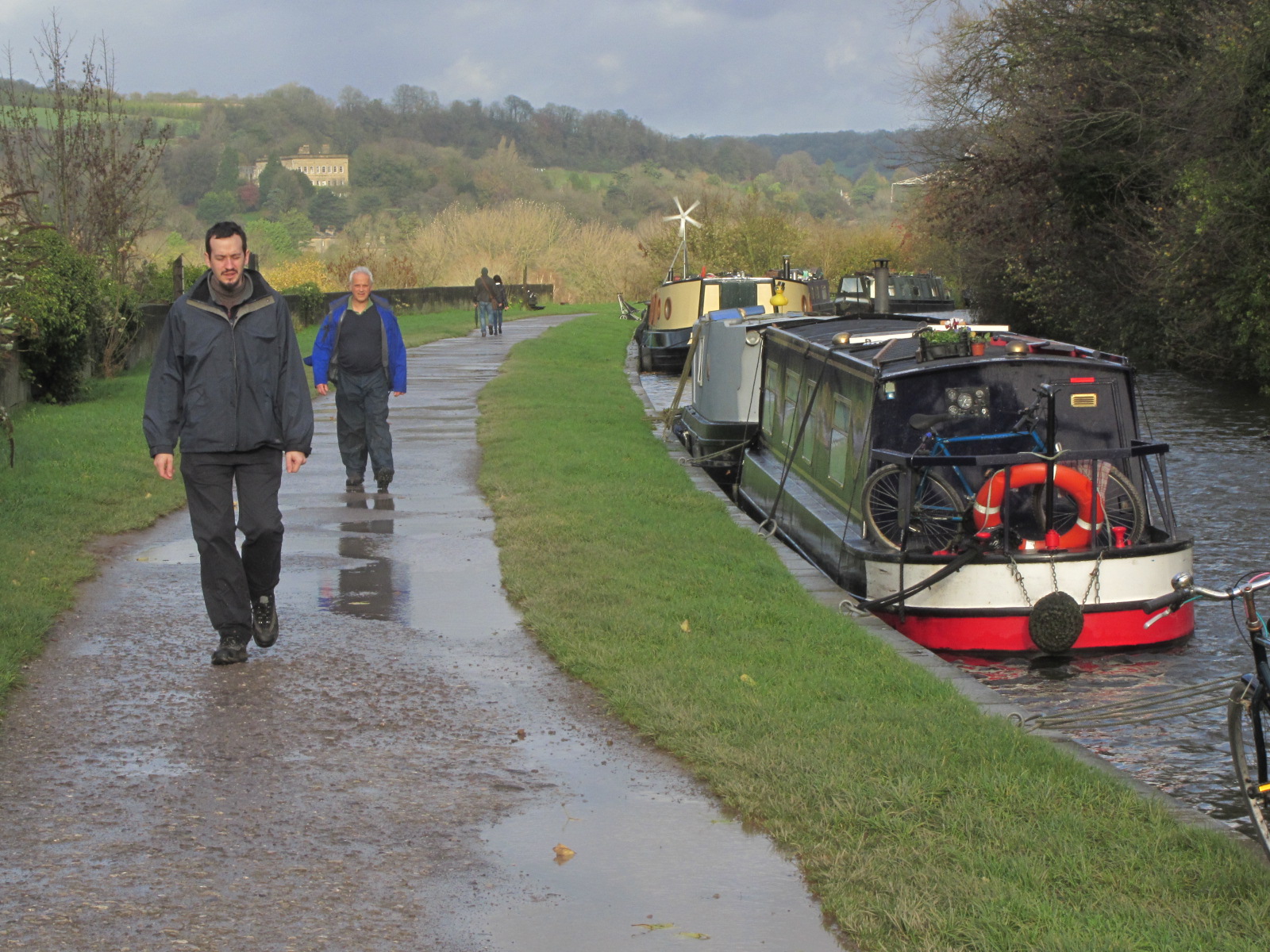 After the rain has gone. Entering Bath along the towpath of the Kennet & Avon Canal after a jolly wet day
After the rain has gone. Entering Bath along the towpath of the Kennet & Avon Canal after a jolly wet day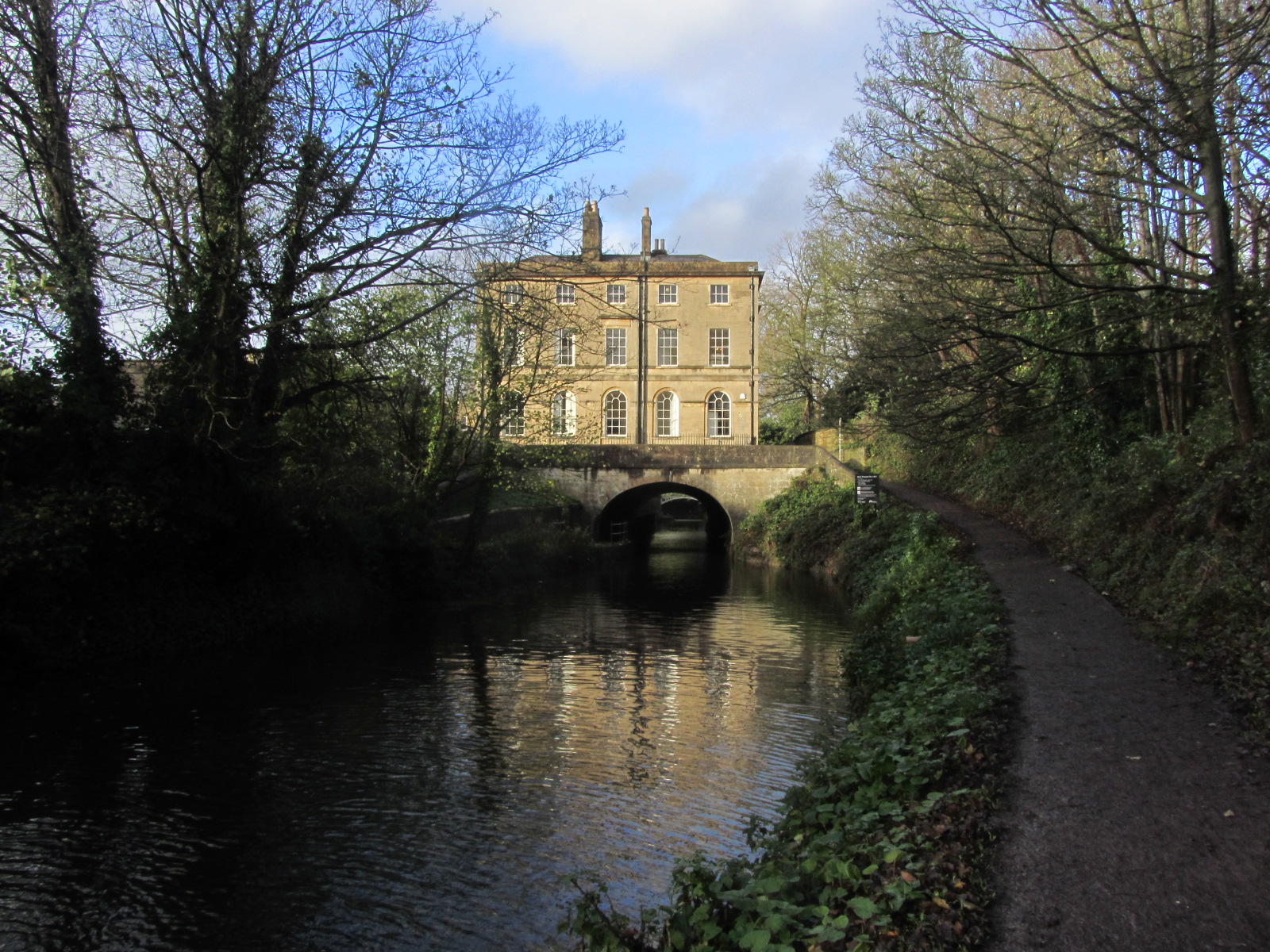 Cleveland House, Bath, home of the Kennet & Avon Canal Company and one of the first purpose built offices in the country.
Cleveland House, Bath, home of the Kennet & Avon Canal Company and one of the first purpose built offices in the country.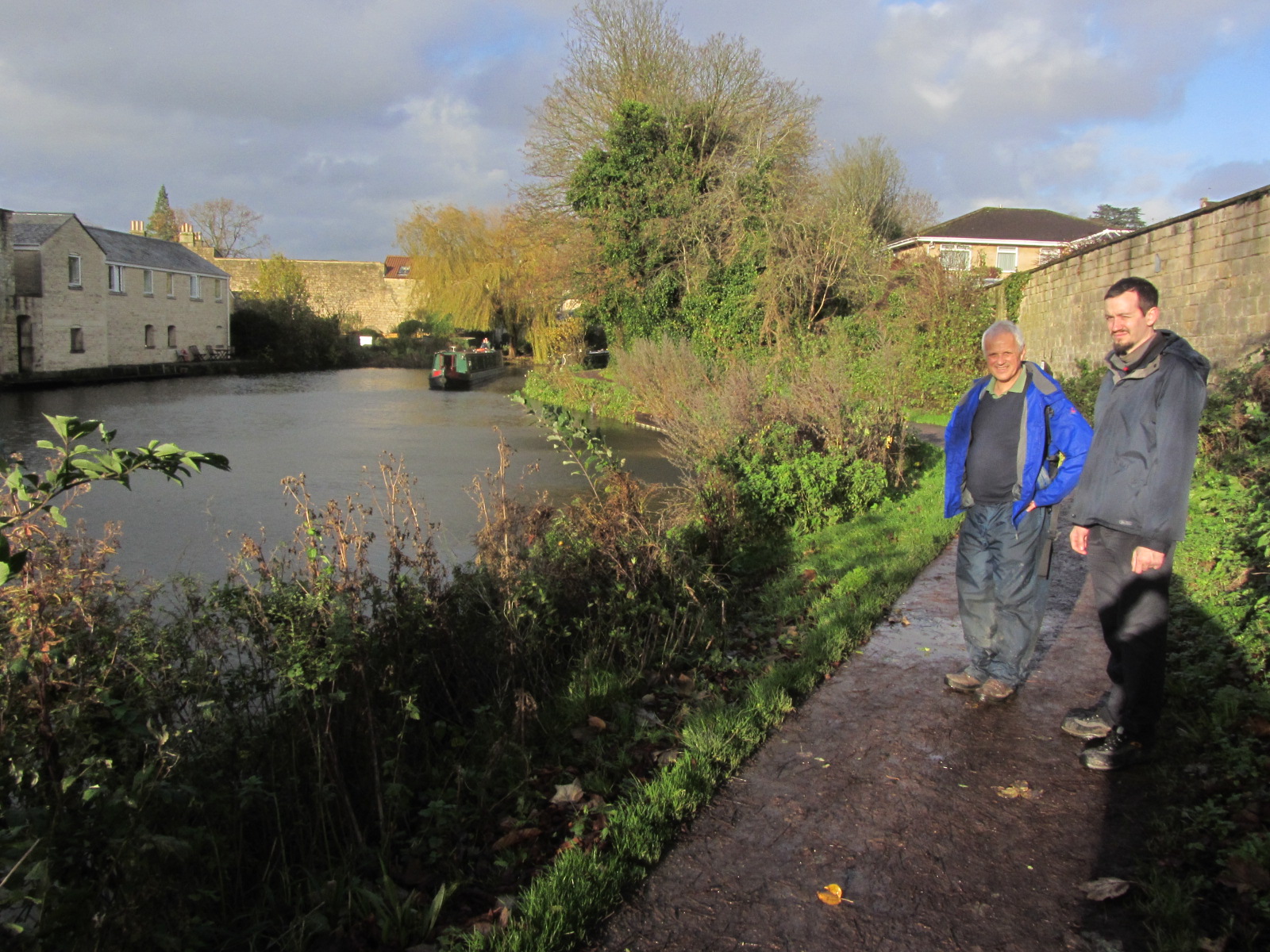 It’s the end of the walk and the sun is shining after a very wet day. This is the Kennet & Avon Canal Towpath in Bath.
It’s the end of the walk and the sun is shining after a very wet day. This is the Kennet & Avon Canal Towpath in Bath.
